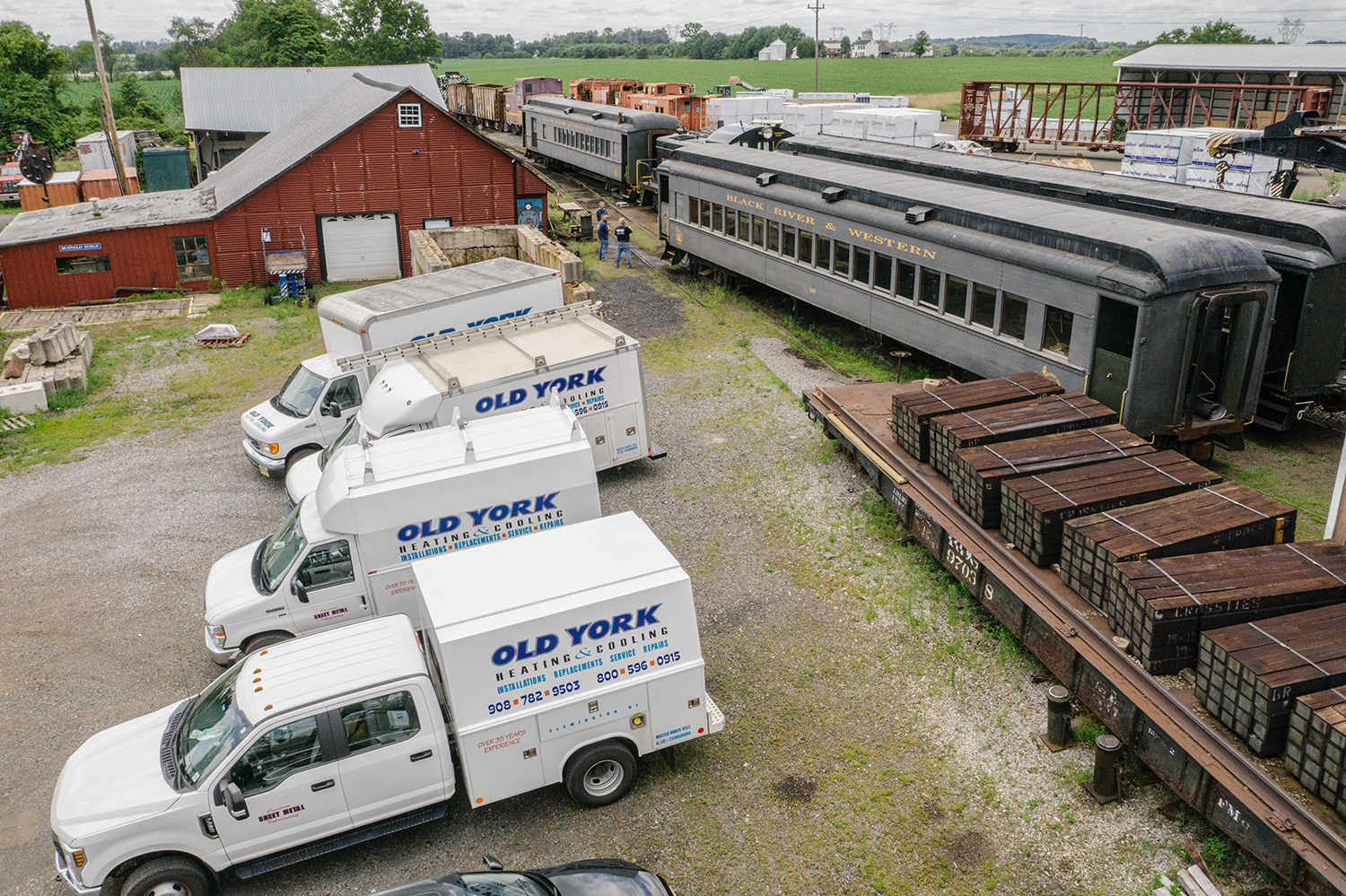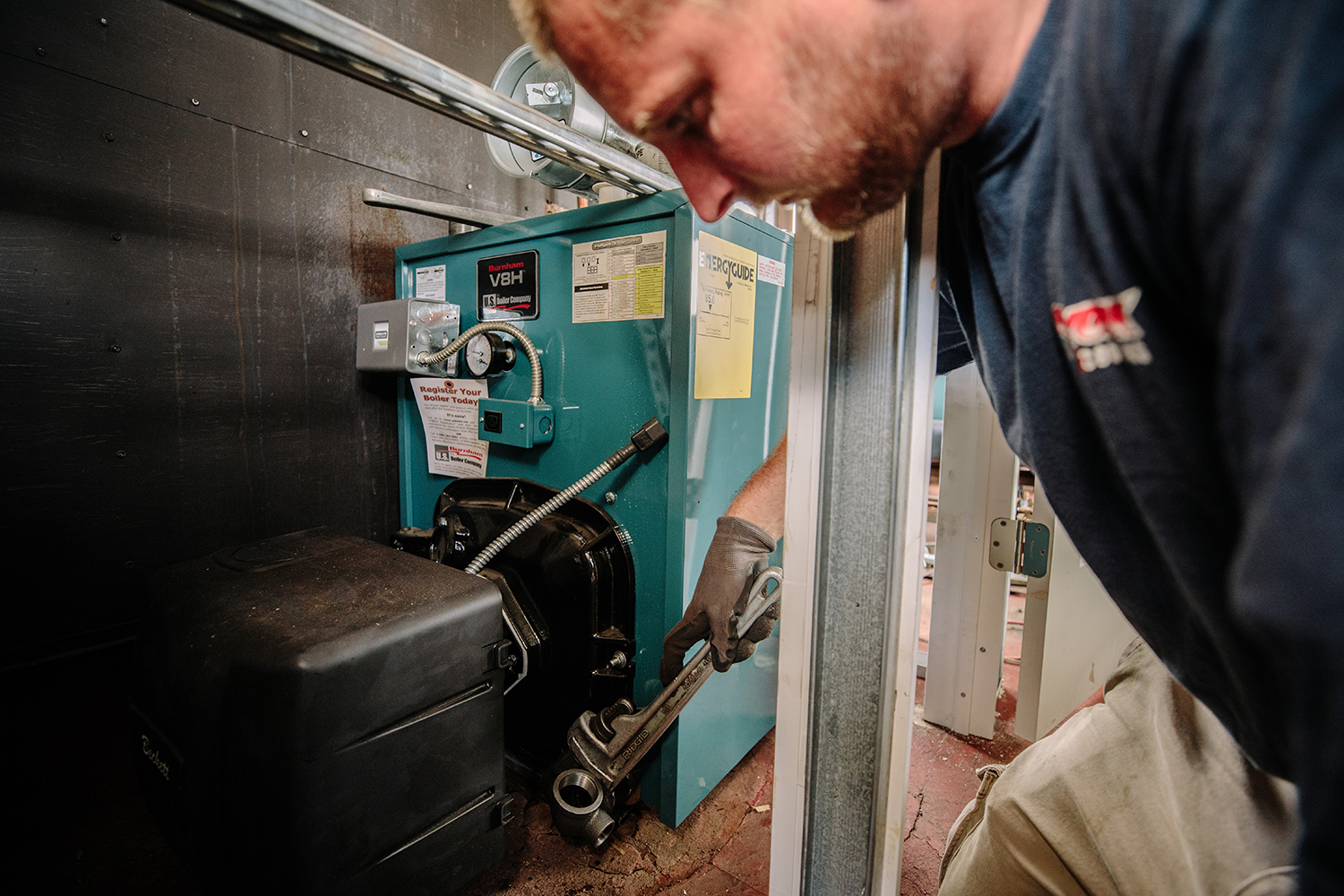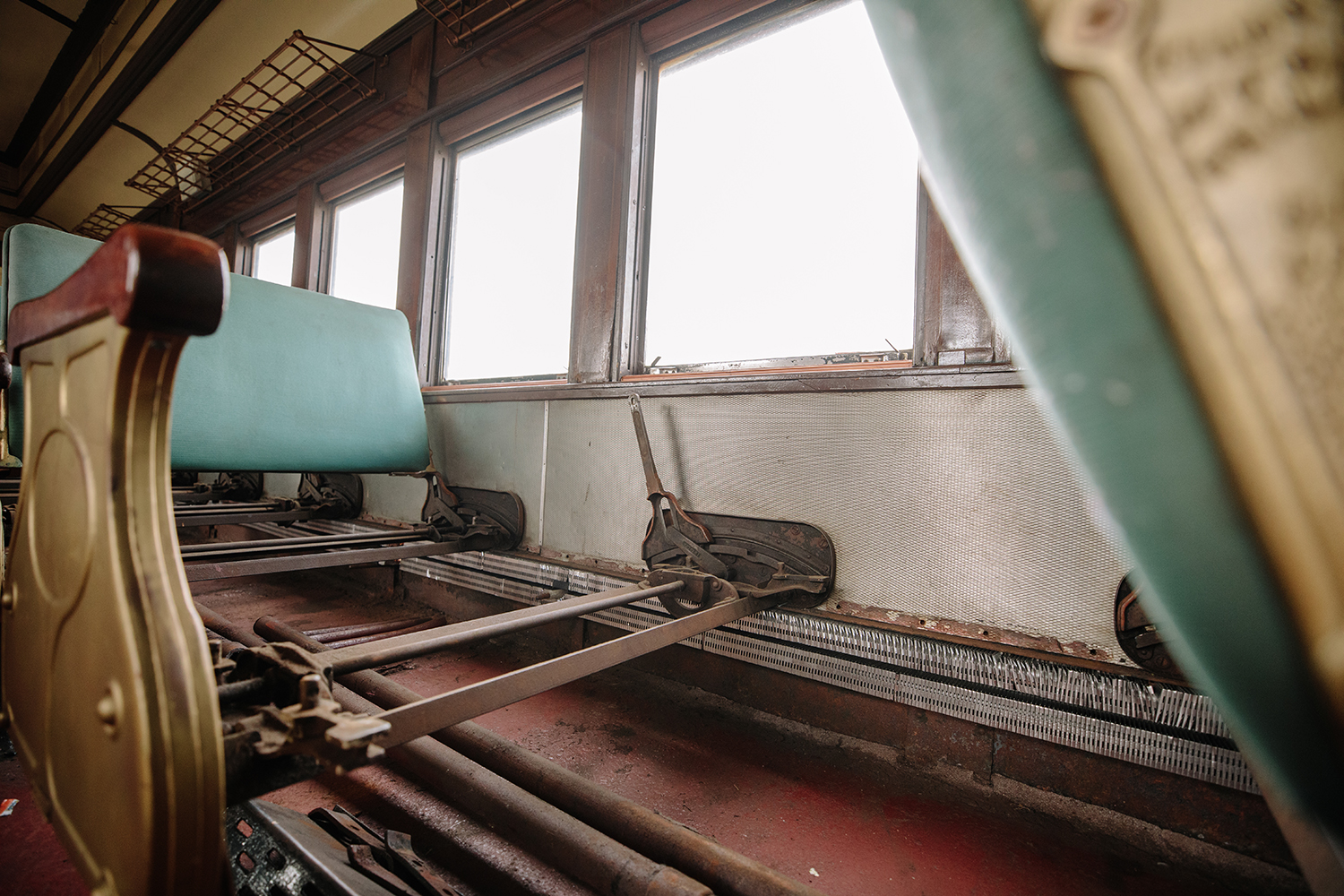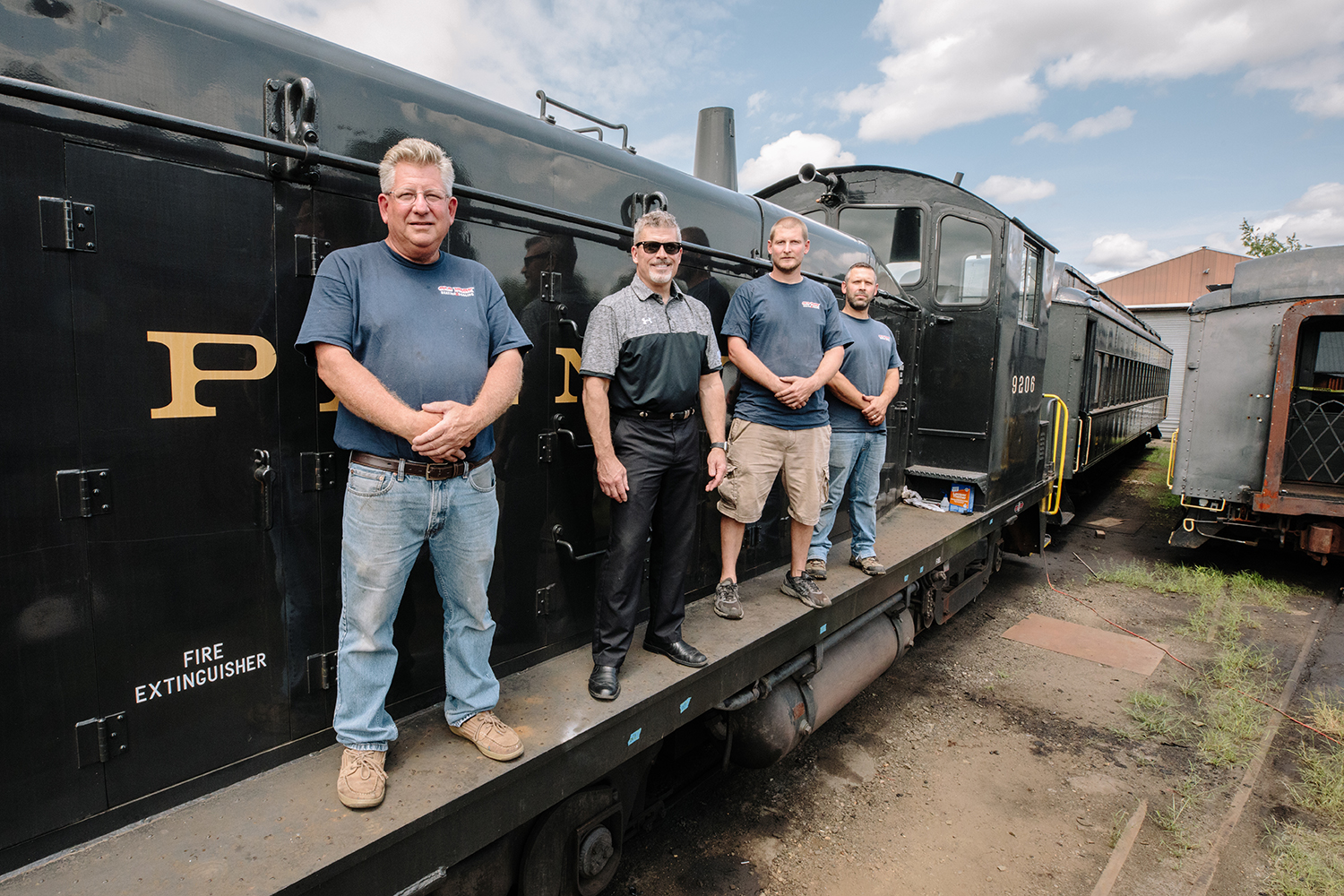The mid-1960s were the beginning of the end for many of the passenger railroads that spider webbed across the Mid-Atlantic. By that time, the personal automobile had been eroding the railroad business for decades, along with growing truck fleets that carried cargo more safely and efficiently than ever before.
In 1965, a number of train enthusiasts in central New Jersey pooled resources in an attempt to preserve the area’s railroad history. The Black River Railroad Trust was formed in Ringoes, NJ, and its founders purchased a variety of equipment and leased a train depot from the old Pennsylvania Railroad. Over the years, this depot was acquired by Black River Railroad Trust, and is today operated as a non-profit organization.
The Trust hosts a variety of fun-filled, themed train rides open to the public. During these events, a locomotive pulls four antique train cars down the Trust’s 17 miles of rail and back. Their North Pole Express event, with Santa Claus aboard, is by far the most popular; tickets sell out by October.
“There’s also a Sci-Fi Day complete with storm troopers, summer excursions, an Easter Bunny Train, Comedy Night, and a Firefly Night, where we ride the train out into the countryside to view fields full of fireflies,” said Dan Palmer, a volunteer for the organization. “We even have a Pumpkin Train, where we’ve partnered with a trackside farm that operates a corn maze, hayrides, and offers pumpkins for sale. All of the events are wholesome fun for everyone in the family!”
Coal to wood to oil
The rail cars used during these events are all roughly 100 years old and sourced from a variety of now-defunct railroad companies across the East Coast. In its early days, Black River Railroad Trust used the cars’ original steam heating systems. Steam from a steam locomotive ran from car to car, connected by heavy rubber tubing. As time went on, the Trust abandoned this system for safety reasons. The steam heating system was replaced by a wood stove in each passenger car.
“We began removing the pot-belly wood stoves a few years ago, switching to hydronic systems in each car,” explained Palmer. “In the first two cars converted, the old steam piping was re-used in conjunction with a new oil-fired water boiler. In the third car, we installed fin-tube baseboard in place of the old steam piping. In the fourth car, Central Railroad of New Jersey #297, we hired a professional for the undertaking.”
Palmer served as a volunteer firefighter with Perry Gross, owner of Old York Heating & Cooling, in Ringoes, NJ. Gross, who founded the 13-person mechanical firm more than 25 years ago had, surprisingly, converted a train car to hydronic heat in the past.

Above: Old York was hired to install a hydronic system in one of Black River Railroad Trust’s historical train cars.
Picking a passenger car boiler
Before Old York gave an estimate for the work, Gross visited the site with Tom Dwyer, field representative at Venco Sales. Dwyer and associate Bob Bruno, technical support specialist, have supported Old York for over a decade.
“I’ve designed systems for ships in the past, but this was my first experience putting a hydronic system in a rail car,” said Dwyer. “Sizing the system was unique. These old cars have steel walls, no insulation, concrete floors, lots of windows, and then consider the fact that they’re moving. The doors and windows, even when closed, are very leaky, so we measured the existing steam radiation tubing, effectively giving us an EDR (equivalence of direct radiation). This gave us a boiler size and a hydronic radiation requirement.”
This particular train car is a “combine”, meaning that about 2/3 of the car is used for passenger seating (50 seats), while the remaining 1/3 of the car is dedicated to cargo space. The original iron steam radiation consisted of two-inch steel tubing that ran through the passenger portion of the car like baseboard, six tubes per side. In the cargo space, a portion of one wall was lined with tubing from top to bottom, like a panel radiator.
“We needed about 140 MBH, and we wanted to install a U.S. Boiler Company MPO-IQ oil boiler,” said Rudy Gross, install manager. “We use the MPO-IQ on most of our oil installations because of its outstanding efficiency, but we also use the V8H when we need a hot water coil; both are extremely reliable boilers. The more we looked at this job, the more evident it became that it would require the V8H3.”
The boiler had to fit in a small closet that was purpose built as a mechanical room, at the front of the car. Front access was extremely limited, which the MPO-IQ requires. The V8H has side cleanout access, instead of front. It also features a top flue connection, whereas the MPO-IQ is vented from the rear. Given the space in the closet and the need to vent the boiler through the roof, the V8H was selected. At 147,000 BTU, the three-section cast iron boiler fit the space and the load nicely.


Above: Rudy Gross and Randy Thatcher install the V8H boiler in a small, purpose-built closet.
On down the line
Installing new radiation was a bigger task than installing the boiler. The car was split into two zones, one for the seating area and one for the cargo room, which will become a space for theme characters to change into costume.
As the original steam piping was removed, 3/4-inch fin-tube baseboard was installed in its place. The original metal coverings were re-used wherever possible.
“The goal was to install as much radiation in the car as possible to meet the load, while maintaining the historic integrity of the car,” explained Rudy. “We have roughly 160 lineal feet in the front of the car and 140 in the rear. That means that we’ll be able to drop our supply water temperature from 180°F to 160°F.”


Above: Old York installed 300 lineal feat of fin-tube baseboard within the train car.
Rudy and Randy Thatcher, Old York’s service manager took extra precautions throughout the project due to the unusual nature of the job, and the fact that the “structure” often moves, rattles and shakes. Rubber tubing was cut up and used as vibration isolation on all of the radiation mounts. A glycol feeder was used supply makeup water and anti-freeze. Fuel oil is stored in a tank salvaged from a refrigerated semi-trailer, and a Tigerloop was installed on the fuel line to scrub air from oil before entering the burner on the V8H.
Old York’s work, which began in late 2019, culminated this past summer. Car #297 is ready for upcoming fall, Holiday and Spring events when social distancing requirements permit operation of Black River Railroad Trust events. In the meanwhile, the Trust is looking at converting other passenger cars in the future.

Above (L-R): Perry Gross, Bob Bruno, Rudy Gross and Randy Thatcher.
Editor’s Note: U.S. Boiler Company’s products are designed for use in residential or light commercial applications. The use of the boiler as described in this article falls outside of the design parameters of the product. We are providing it here only as an item of interest for our readers.

